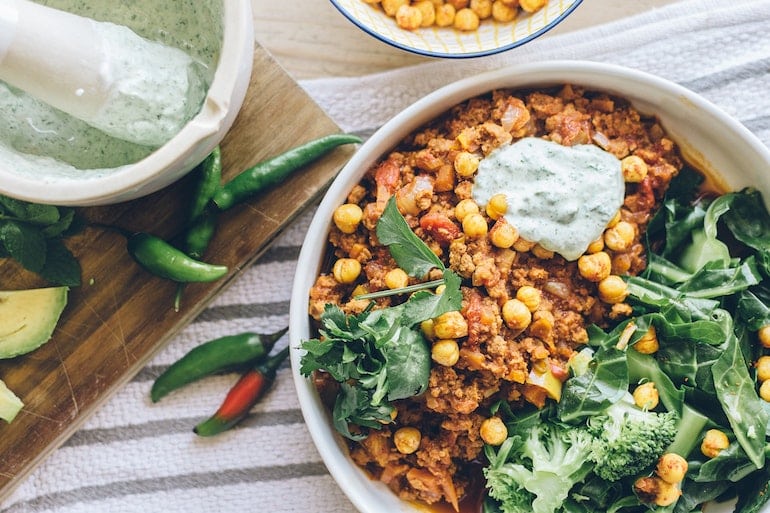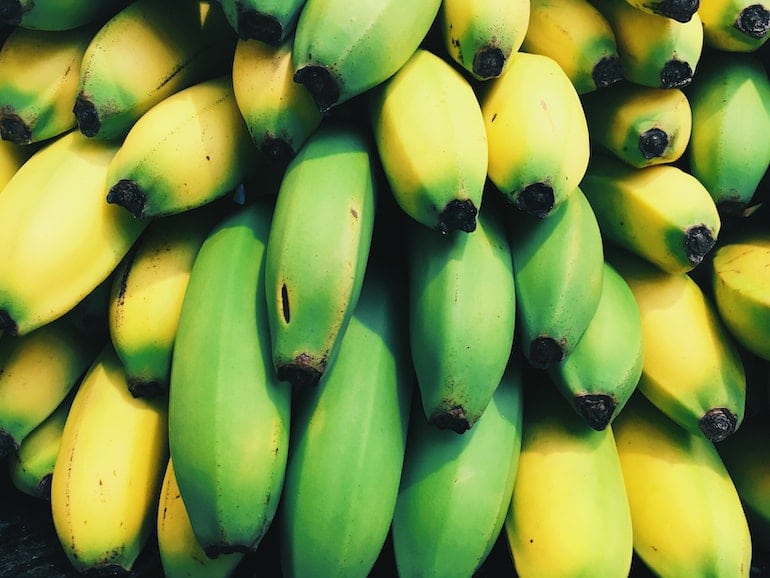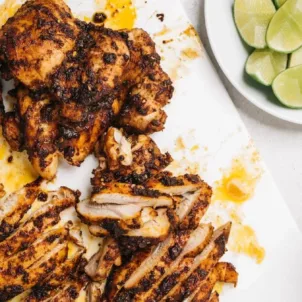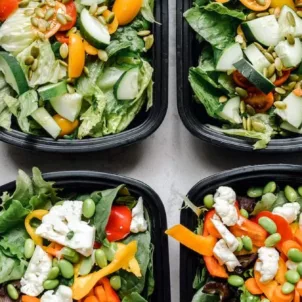The One Carbohydrate You Should Be Eating for Gut Health
Here’s the call to eat more carbs. Yes, you read that right, just be sure you’re loading up on gut-healthy resistant starches. Learn more about the carb star and resistant starch foods to add to your diet.
During a time when it seems as if everyone’s actively avoiding carbohydrates—with even beans and oatmeal getting a bad rap in some diets—the reality is that foods like these provide a major health boost because of a very special carb they contain: Resistant starch. This type of fiber has been linked to better gut health, possibly weight and blood sugar management, and more.
What is Resistant Starch?

“Resistant starch is a form of carbohydrate that’s resistant to the digestive enzymes in the small intestine,” explains EA Stewart, RD, a registered dietitian and digestive health expert at The Spicy RD in San Diego, CA. When you think about the name “resistant starch,” its function in the body begins to make sense. Simply put: It’s not digested in the small intestine. Instead, once resistant starch enters the large intestine, it’s fermented by gut bacteria. This is unlike the carbohydrates in some other forms of starch, which your body digests and gets energy from.
So, what are the benefits to undigested forms of starch? They might not give you energy—but they do act as a source of prebiotics to provide a food source for your gut microbiome, says Stewart. The bacteria in your gut need prebiotics to grow and thrive.
The type of foods resistant starch is found in “also tend to increase satiety and fullness,” says Stewart. “In that way, they may help with weight loss if you feel fuller and eat fewer calories.”
There is also some research showing that replacing carbohydrates in your diet for resistant starch foods may help improve insulin sensitivity and result in lower blood sugar levels after eating. However, one’s blood sugar response to foods is extremely individual. Resistant starch in a meal may help blunt blood sugar levels for some people, but it could still lead to a spike for others.
While there is talk that resistant starch may help decrease the risk of metabolic syndrome, type 2 diabetes, and obesity—and these benefits may be promising—ultimately more research needs to be done to know if these links are legit, according to a 2022 review in the Journal of Functional Foods.
How Resistant Starch Can Benefit Gut Health
Your gut contains a mix of both “good” and “bad” living bacteria. “We want those good bacteria to thrive, and so we need to provide them with food,” says Stewart. A healthy microbiome plays an important role in immune function, as well as the production of mood-regulating neurotransmitters, such as serotonin, she adds.
When you feed your gut bacteria—and this includes prebiotics from resistant starch—they produce short-chain fatty acids (SCFAs), says Stewart. Resistant starch is particularly stellar at producing an SCFA called butyrate, according to research. Why does that matter? “Butyrate is a source of energy for the cells of the intestine and gut,” she says. While we’re still understanding just how butyrate might benefit health, emerging research suggests the SFA may decrease inflammation, regulate blood sugar, and protect your heart, the Cleveland Clinic points out.
Including resistant starch foods in your diet may also help if you have a GI disease. Early studies show that people with irritable bowel disease (IBD) who eat resistant starch have less inflammation in the lining of the intestinal tract, experience fewer symptoms, and may improve their ability to stay in remission, according to a review in BMC Gastroenterology.
Resistant Starch Foods

The good news is that there are so many good-for-you foods that contain resistant starch—and they’re tasty, too. Some foods naturally contain resistant starch, while other times, resistant starch can be created by the type of cooking and cooling method used on certain foods. Here’s where to get more in your diet, advises Stewart:
- Oats
- Lentils
- Beans (particularly white beans)
- Dried peas
- Plantains
- Unripe (green) bananas
Another trick for adding more resistant starch into your diet? Cook, cool, and then reheat (or consume cold) common carb-rich foods, such as white potatoes, pasta, and rice. “Heating decreases some resistant starch in foods, but then some of that resistant starch appears again when the food is cooled,” says Stewart. Here’s your green light to have that chilled pasta or potato salad or make extra rice to have with a stir-fry leftover tomorrow.
How Much Resistant Starch Should You Be Eating?
Wondering how much resistant starch you should be eating? Simplest answer: If you’re not already eating the foods above, start incorporating them into your diet. One study in Nutrients in 2020 found that just five percent of those surveyed consumed legumes (beans, lentils, peas) daily, and one-third did not eat any over the prior month. Those who consumed a good amount ate them three to four times per week, so this is a good goal to aim for.
But don’t worry too much about consuming a certain amount of resistant starch, says Stewart. Currently, there are no official recommendations for resistant starch intake.
People often find it tough to make legumes a regular part of their diet, but Stewart says it can be done. “I’m a lentil pusher,” she says. “They are so hugely underrated, and are often an easier hurdle for people who don’t like beans because they’re smaller and milder in taste.” Try them in place of ground meat (e.g. lentil tacos, lentil sloppy joes), soups, stews, salads, and even—as Stewart recommends—frozen and dropped into a smoothie to amp up the fiber and protein content. If you’re not into the prep work that goes into boiling lentils until soft, you can often find cans or packages of precooked lentils.
Some resistant starch foods, like oats, can be consumed raw, but always make sure you eat legumes cooked, says Stewart. As for raw oats, these are great stirred into oatmeal (you can let sit overnight for overnight oats or consume on-the-spot), blended into a smoothie, or combined with pieces of dried and fresh fruit, nuts, and seeds and eaten as a muesli-like cold cereal with dairy or non-dairy milk.
If you don’t like the taste of green bananas, try green banana flour, notes Stewart, which can be used in baking, or added to a smoothie, pancakes, or waffles.
One thing to keep in mind: When you increase the amount of fiber-rich plant or prebiotic foods, you may experience GI discomfort at first, says Stewart. “For someone who has existing gut issues, introducing too much resistant starch foods could lead to digestive discomfort,” she says. And if you don’t feel well eating these foods, you’re more likely to stop eating them altogether. For best results, add these foods in slowly and gradually increase them in your diet.
The Takeaway
TLDR: Resistant starch is a type of carbohydrate that isn’t digested. It delivers a host of benefits, including feeding good bacteria in your gut, blunting your blood sugar response after eating, and helping you feel full, among others. Focus on adding more of the foods that are a source of resistant starch, rather than trying to get a certain amount per day. These, including oats, lentils, beans, and potatoes, offer a variety of additional nutrients that promote health.











